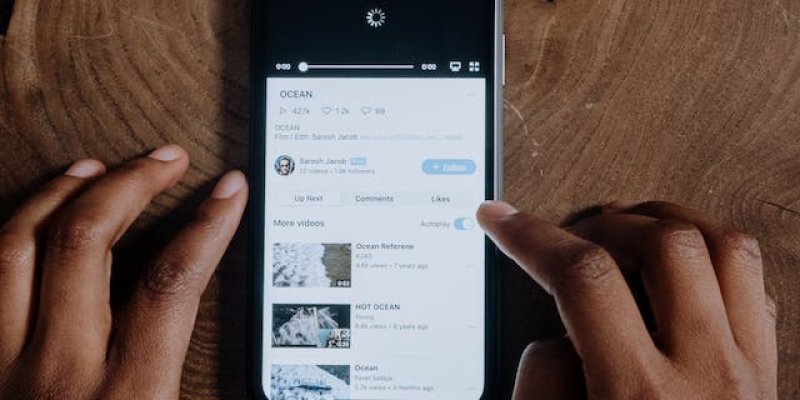
YouTube, a platform of boundless creativity, provides content creators with a global stage to showcase their talents. However, the world of copyright laws can be so overwhelming.
In the early days of YouTube, you would rarely come across copyright claims, but as the years have gone by, they have been identifying the illegal use of songs with their Content ID program pretty easily.
While it may be annoying, this is actually a great thing for the hardworking artists who are getting paid for their creative works. It's a little less great when you consider the greedy labels who rake up a large chunk of the royalties, but that's beside the point.
Let's go over some effective strategies for avoiding copyright claims on YouTube, ensuring that your creative journey remains both legal and hassle-free.
In the digital realm, myths and misconceptions about copyright are all over the place. Debunking these fallacies is a must for creators to navigate the YouTube landscape confidently.
Common myths such as "crediting the artist is sufficient", "using short clips qualifies as fair use", or saying "I do not own the rights to the content" can lead to copyright claims and legal troubles.
Going through the trouble of speeding, reversing, or taking tiny clips of songs or videos in order to bypass the laws may work sometimes, but YouTube's Content ID system is always getting smarter.
By understanding the realities of copyright law, creators can make informed decisions, ensuring that their content not only respects intellectual property rights but also stands resilient against potential legal challenges.
Clearing the fog of misinformation allows creators to produce ethical and legal content, fostering an easy-going and respectful online community.
Related Post: Using "I Do Not Own The Rights To This Music" For Protection
Coming up with your own melodies and compositions stands as the best use of creativity and legality in the YouTube landscape.
By investing time and effort into producing your music, you not only infuse your videos with a unique identity but also steer clear of copyright issues.
Your creations become your intellectual property, granting you complete control over your content. Whether you're a seasoned musician or a novice experimenting with beats, creating your music allows you to tell your story without any legal hurdles.
Stock music libraries, that have tons of royalty-free tracks, offer creators a vast selection of songs for videos. These platforms curate music across genres, catering to diverse tastes.
Utilizing stock music ensures that you have the legal right to incorporate high-quality soundtracks into your content without worrying about copyright claims.
Many platforms like Premium Beat and Epidemic Sound offer both free and paid options, allowing flexibility based on your budget.
With these libraries, you can elevate the production value of your videos while maintaining compliance with copyright regulations.
Creative Commons (CC) licenses provide a middle ground between full copyright and the public domain, allowing artists to specify how their work can be used.
There are various CC licenses, some allowing for commercial use and modifications, while others require attribution.
Platforms like Jamendo and SoundCloud host a vast collection of music released under CC licenses.
By selecting CC-licensed music that aligns with your content needs and adhering to the specified license terms, you can incorporate music legally, respecting the creator's rights.
Public domain songs, the gems of yesteryears, are invaluable resources for content creators. These compositions, whose copyrights have expired, offer a rich collection of musical gold that is free for public use.
Classics, folk songs, and works published before specific dates are typically considered public domain. However, it's essential to verify their copyright status before incorporating them into your videos.
By leveraging public domain songs, you not only add a touch of timeless elegance to your content but also avoid copyright claims, allowing your creativity to flow freely.
Related Post: Popular Public Domain Songs - Cover Song Ideas
For those who want to breathe new life into popular tunes, acquiring cover licenses is the gateway to creative expression. These licenses grant you legal permission to create and publish your own renditions of copyrighted songs.
Numerous online platforms and licensing agencies facilitate this process, ensuring that you can showcase your talent without any legal complications.
The one I like to use for this service is Distrokid, which allows me to upload covers to YouTube and Spotify.
By investing in cover licenses, you honor the original work while infusing it with your unique style, all within the bounds of copyright law.
Collaborating with unsigned artists is a win-win strategy for both content creators and musicians seeking recognition. Emerging talents often welcome the exposure that comes with having their music featured in YouTube videos.
By reaching out to these artists and obtaining their permission, you can incorporate their original compositions into your content legally.
This collaboration not only enriches your videos with fresh and authentic sounds but also supports independent artists on their creative journey.
Related Post: YouTube For Artists And Musicians - 10 Ways To Get More Views Organically

As a session singer, writer, and producer that has worked with over 300 clients to provide high-quality jingles, singles, and features, Yona spends her time creating and marketing new music and helpful resources for creators. Check out Yona’s latest releases on her Spotify, her Youtube and share if you like it!
If you are in need of singer, songwriter or song producer services, see what Yona Marie can offer you on her services page.